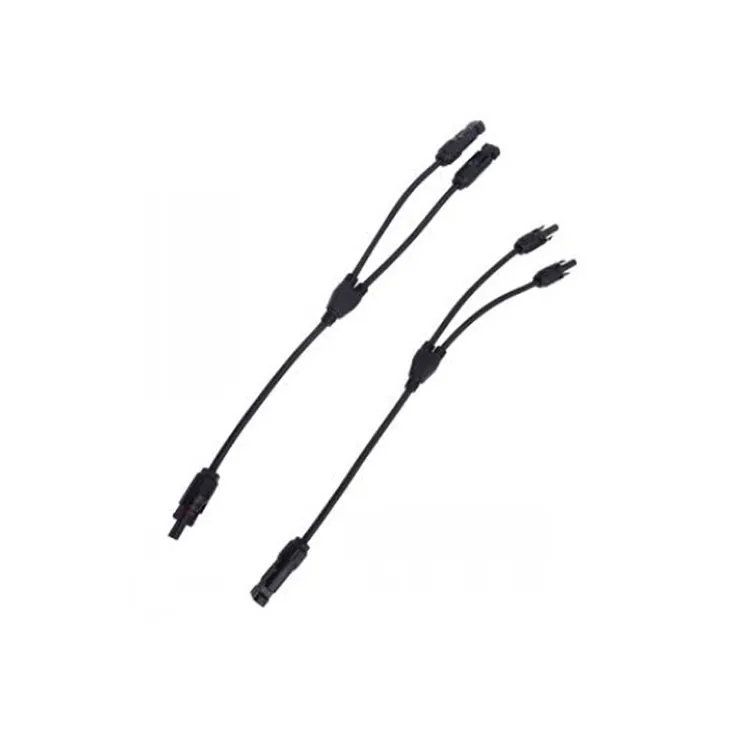The Benefits of Single-Core Cables in Solar Installations: Flexibility and Durability
2024-11-15
When it comes to designing and installing solar power systems, selecting the right type of cable is critical for ensuring the system’s performance, longevity, and safety. One type of cable that is frequently used in solar installations is the single-core cable. Single-core cables offer several distinct advantages over other types of cables, particularly in terms of flexibility and durability. In this blog, we will explore the key benefits of single-core cables in solar applications and why they are often preferred for both residential and commercial solar power systems.
What are Single-Core Cables?
Single-core cables consist of a single conductor (typically made from copper or aluminum) surrounded by an insulating layer. These cables are commonly used in solar installations for both DC (direct current) and AC (alternating current) circuits. In solar power systems, single-core cables are generally used to connect solar panels to inverters, batteries, and other components of the system.
While multi-core cables (which have multiple conductors within one cable) are also used in solar installations, single-core cables have distinct advantages, particularly in terms of handling environmental stress, minimizing power loss, and providing greater installation flexibility.
Advantages of Single-Core Cables in Solar Installations
1. Enhanced Flexibility
One of the key benefits of single-core cables is their flexibility. Solar panel installations, especially on rooftops or in complex layouts, often require cables that can be bent and routed through tight spaces without compromising their performance. Single-core cables are typically more flexible than multi-core cables because:
- Simplicity of Construction: Since single-core cables contain only one conductor, they can be made with fewer layers of insulation and protective coverings. This makes them lighter and more flexible, allowing them to be easily bent and maneuvered around obstacles.
- Easier Installation: The flexibility of single-core cables makes them much easier to handle during the installation process. Installers can quickly route the cable through conduits, across rooftops, or in outdoor environments without worrying about the cable kinking or becoming damaged during installation.
- Reduced Weight: Single-core cables are generally lighter than multi-core cables, which can help reduce the weight load on supporting structures like solar panel mounts, racks, or cable trays.
2. Superior Durability and Resistance to Harsh Environments
In solar installations, cables are often exposed to harsh environmental conditions, including UV radiation, extreme temperatures, and moisture. Single-core cables are engineered to provide excellent durability in such conditions, thanks to their robust construction.
- High-Quality Insulation: The insulation material used in single-core cables, such as PVC (Polyvinyl Chloride) or XLPE (Cross-Linked Polyethylene), provides superior resistance to UV rays, chemicals, and physical wear. This makes single-core cables ideal for outdoor solar installations where cables are exposed to the sun, rain, and wind over extended periods.
- Temperature Resistance: Solar installations often operate in environments with wide temperature fluctuations. Single-core cables are typically designed to withstand high temperatures without degradation. The insulation materials used are capable of withstanding the intense heat generated in solar installations, especially in areas with high solar irradiance.
- Waterproof and Corrosion-Resistant: Many single-core cables are designed to be waterproof and resistant to corrosion, which is especially important when cables are exposed to moisture, such as during rainfall or in humid environments. The durable outer sheath and insulation protect the conductor from water ingress and chemical damage.
3. Lower Power Loss
In solar power systems, efficiency is key to maximizing energy generation. Single-core cables are often preferred in these systems because they offer lower resistance and, consequently, reduced power loss compared to multi-core cables.
- Reduced Resistance: The single conductor in a single-core cable has a simpler path for the current to flow, reducing the amount of energy lost as heat due to electrical resistance. This is especially important in large-scale solar installations where power loss can significantly affect the overall efficiency of the system.
- Minimized Signal Interference: Multi-core cables can sometimes experience signal interference or crosstalk between conductors. With single-core cables, this risk is minimized since there is only one conductor per cable. This ensures stable transmission of DC power from the solar panels to the inverter without signal degradation.
4. Cost-Effectiveness
Single-core cables are often more cost-effective than multi-core cables. Their simplicity in design, fewer materials used in production, and ease of installation contribute to a lower overall cost. This makes single-core cables an attractive option for solar projects, especially when managing budget constraints is a priority.
- Lower Installation Costs: The reduced weight and flexibility of single-core cables can lower installation labor costs, as installers can work more efficiently and require fewer tools or components to handle the cables.
- Long-Term Savings: Since single-core cables offer superior durability and resistance to harsh environmental conditions, they are less likely to need replacement or repairs over time. This can result in long-term savings for solar system owners.
Applications of Single-Core Cables in Solar Installations
Single-core cables are commonly used in a variety of solar installation scenarios, including:
- Connecting Solar Panels to Inverters: Single-core cables are often used to connect solar panels to inverters in both residential and commercial solar power systems. The cables carry DC power from the panels to the inverter, where it is converted into AC power for use in the electrical grid or for onsite consumption.
- Connecting Batteries to Solar Systems: In off-grid solar installations or hybrid systems, single-core cables are used to connect solar batteries to inverters or charge controllers.
- Interconnecting Solar Arrays: For large-scale solar power plants, single-core cables are used to interconnect multiple solar panels or solar arrays, ensuring efficient power transmission across the system.
The advantages of using single-core cables in solar installations are clear: they offer flexibility, durability, reduced power loss, and cost-effectiveness. Their superior ability to withstand harsh environmental conditions, coupled with their lightweight construction, makes them an excellent choice for both small and large solar installations. As the demand for renewable energy continues to grow, single-core cables will remain a key component in ensuring that solar power systems operate at maximum efficiency and reliability.



